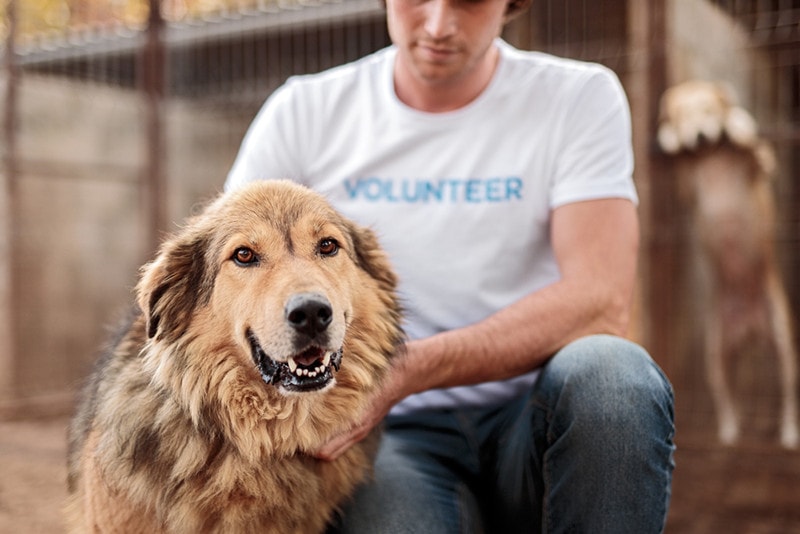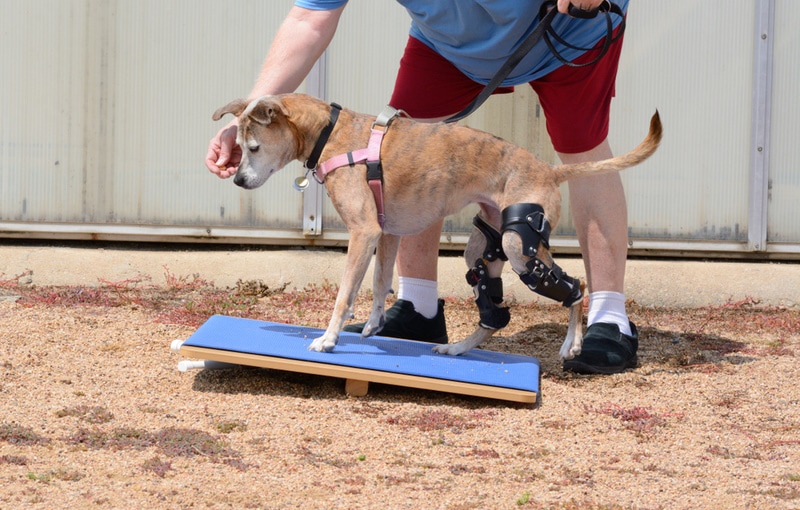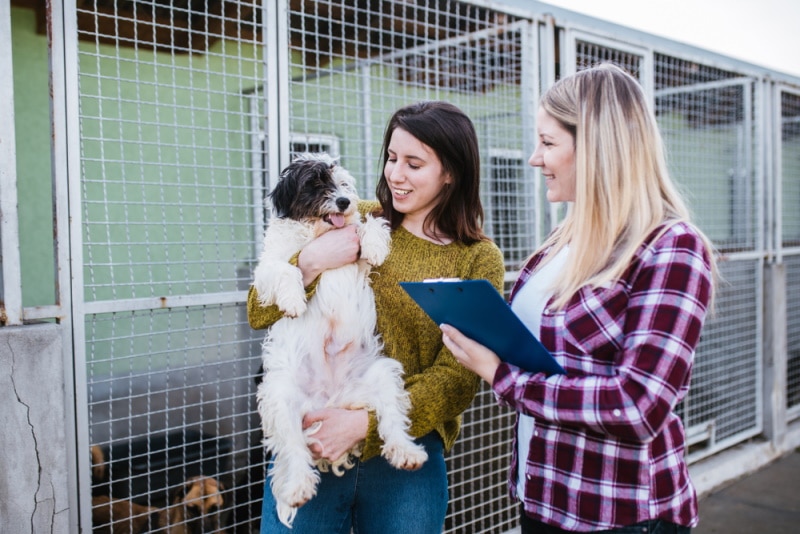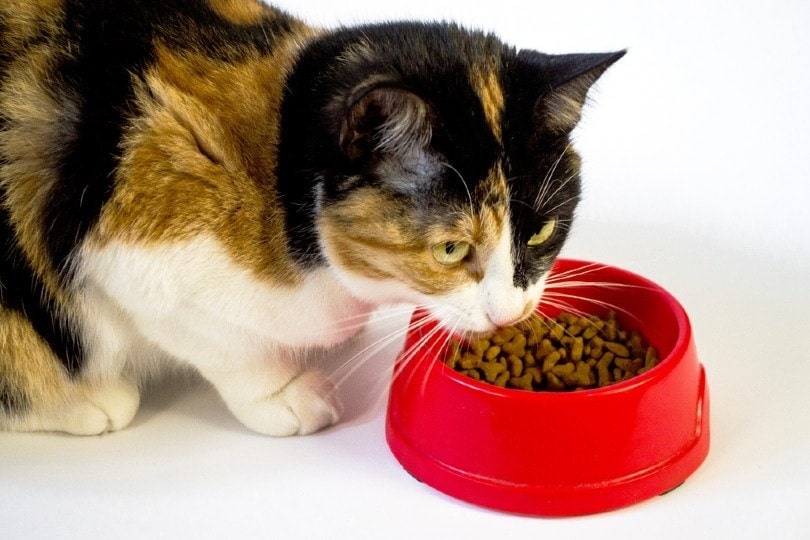What Happens to Dogs That Don’t Get Adopted? Facts & How to Help
By Grant Piper
Updated on

Anyone who has visited an animal shelter will likely find themselves asking what happens to the dogs that do not get adopted. Some animal shelters are massive. Areas like Miami or New York can have thousands of animals in their shelters. Unfortunately, not all of them can or will get adopted. Many people automatically think that any dog that sits in the shelter too long will get euthanized. While that certainly does happen, it is not the only fate assigned to dogs that do not get adopted in a timely manner.
Here is what you need to know about dogs that do not get adopted so you will be better informed about your local animal shelter network.
What Happens to Dogs That Don’t Get Adopted From Shelters?
1. Euthanasia
The worst thing that can happen to a dog that does not get adopted is euthanasia. Unfortunately, euthanizing unwanted dogs is very common in some communities. While it sounds cruel or unfair, some shelters just do not have the resources to deal with dozens or hundreds of stray animals that flow into the shelter on a regular basis. There are a lot of stray animals, and some regions have an insane density of stray animals. If the shelter runs out of room, resources, or money, it will need to cut back on its population by euthanizing dogs that are sick, aggressive, or deemed unadoptable for whatever reason.
Dogs are euthanized by lethal injection. The procedure is done by a veterinarian. Afterward, the body is disposed of, and another dog then fills the kennel space that the dog was taking up. Euthanasia is a sad but necessary part of the animal shelter world.
Not all shelters euthanize animals. Even the shelters that do practice euthanasia do not always have very high rates of euthanasia. The numbers are different for each shelter and each area individually.

2. Lifers or Long-Term Residents
If a shelter has the resources or does not participate in euthanasia, they might host lifers. Lifers are long-term residents that live at the shelter long term as they wait to get adopted. Sadly, many lifers are simply old dogs that have nothing wrong with them. Old dogs are commonly passed over in favor of young dogs. As young dogs get adopted, more young dogs take their place, leaving the older dogs to sit and wait and wait and wait, hoping to get adopted by someone who is willing to take a chance on a long-term resident.
Long-term residents are not super common, but they do exist in certain shelters. Long-term residents drain valuable resources from the shelter. A long-term unadoptable dog that draws from the critical resources that are used to run the shelter is often the least desirable outcome for a shelter dog.
3. Transportation
Behind the scenes, there is a large transportation network that moves dogs all around the country. Surprisingly, there is a supply and demand for shelter dogs. Some areas have way more stray dogs than others. Puerto Rico, for example, has high numbers of healthy dogs that come off the street and are then shipped to the mainland to fill shelters that are low on dogs. This helps redistribute dogs so that shelters do not run out of resources as quickly. It also helps dogs get adopted.
A small street dog from Puerto Rico has a much better chance of getting adopted in Austin than it does in San Juan. A dog that does not get adopted at one shelter might be shipped to another shelter across the country, where they are then adopted by a different demographic. If you see a shelter dog disappear from its kennel, it might not have been euthanized, it might have been shipped to a different region where they have a better shot at finding a family.
4. Rescue and Rehabilitation
The last avenue for dogs that do not get adopted from any of the different shelters is the rescue and rehabilitation route. Some dogs are unadoptable due to medical issues. Whether the problems are injuries sustained on the streets, or expensive procedures that a previous owner could not afford, or a genetic or congenital deformity, some dogs are hard to care for or expensive to fix.
In these cases, some dogs will be paired with rehabilitation centers that will work to get them back to 100%. Many times, the necessary procedures are crowd-funded or fueled by donations. The dogs will then be placed in a rescue group’s care and fostered at volunteer homes until they are ready to be put up for adoption once more.
Dogs that get rehabilitation, medical care, or rescue treatment vastly increase their chances of eventually getting adopted. Many times, the rescue groups will adopt the dogs out directly, but in some cases, they will send them back to the shelter with a much better chance of being paired with a loving family.

5. Kill Shelters vs. No-Kill Shelters
There are two umbrellas that shelters can fall under. There are kill shelters and no-kill shelters. Kill shelters are any animal shelter that will use euthanasia if necessary. Some shelters euthanize more dogs than others. No-kill shelters refuse to do any euthanasia. That means they will use every means possible to move on from a dog that does not involve euthanasia.
There is a loophole with no-kill shelters that you need to be aware of. Remember how we told you that many shelters will transport dogs between one another? Some no-kill shelters will sneakily ship dogs to kill shelters when they cannot adopt them. On paper, they just list it as a simple transfer, but some shelter directors know that the dogs are going to a kill shelter where they will likely be euthanized. Unfortunately, for a layperson, it can be difficult to tell that this is occurring behind the scenes.
6. Public Shelters vs. Private Shelters
Another thing that determines how dogs are ultimately treated is whether the shelter is public or private. Any animal shelter operated by the city or the county is a public shelter. That means that they get their funding from the local people via taxes, and their resources are budgeted by the government. Many public shelters are kill shelters due to scarce resources. Then, you have private shelters. In many areas, organizations like the Humane Society will operate animal shelters that have nothing to do with the public shelters. Private shelters are often no-kill shelters.
Public shelters are often more inclined to euthanize dogs that do not get adopted because they do not have the resources to transport, rehab, or house dogs long term. Many public shelters deal with massive volumes of stray animals and often have minimal staff and low budgets. Private shelters are more likely to house a lifer, move dogs around the country to more desirable areas, and often pair with local rescue groups.
But this is not always the case. Most of this information is public, and you simply have to look it up. Check who owns and operates the animal shelter in question and look up their specific policies for unwanted or long-term dogs. Some public shelters are no-kill, and some private shelters are kill shelters.
How Can You Help?
The best way to help out your local shelter is to adopt dogs from them instead of buying dogs. Buying dogs from breeders adds dogs to the local ecosystem, which eventually puts strain on the local shelters. If you can’t adopt, another way to help is to donate money, supplies, and time. Many shelters need volunteers to help them out by fostering dogs. The saying adopt, don’t shop (or don’t shop, adopt) is powerful and effective. Avoid going through breeders and adopt from your local shelter instead. This will prevent dogs from ending up on the unadoptable list, which will save resources and avoid euthanasia.

Conclusion
Dogs that do not get adopted have a number of paths they can be put on. They can be euthanized, they can be rehabbed, they can be transported to new shelters, or they can remain as a long-term resident of the shelter. Many shelters will resort to euthanasia to help manage their local stray animal population, but not all of them will. You can help ease pressure on your local animal shelter by adopting dogs, volunteering, or donating.
Featured Image Credit: Max kegfire, Shutterstock












